
A friend sent me a link to a Vox article: The extinction crisis that no one’s talking about: coffee, wine, and wheat varieties are among the foods we could lose forever. The tie being made was our modern reliance on industrialized monoculture farming, coupled with climate change, habitat destruction, etc. is leading to the decline of seed and crop diversity, and the overall declines in the number of edible, and nutritious plants.
—**—
Crop Diversity
The CropTrust organization writes: Crop diversity is the foundation of agriculture, enabling it to evolve and adapt to meet the never-ending challenge of sustainably producing sufficient and nutritious food for an increasing population.
300k Edible Plants, We Use 200
The science has been clear, there are more than 400,000 species of plants on earth, at least half of which are edible for humans. Indeed, it is entirely possible that we are capable of eating 300,000 plant species. But, as WeForum continues, we consume just a tiny fraction of that. Homo sapiens, the most cosmopolitan of species, one that thrives by virtue of being a generalist, eats only about 200 plant species. Remarkably, a mere three crops – maize, rice, and wheat – account for more than half of the calories and proteins that we derive from plants.
By over-relying on these over-planted 200 plants, we are in fact dismissing all those other plants, as if they contained no nutritional value. We focus on those 200, and allow the others to wither, and become extinct, with no notice. On the flip side, we see no harm in operating large, monoculture, industrial farms that have catastrophic side effects, so long as we have food on grocery shelves, at reasonable cost. But the “we” I use here does not represent everyone. The ”we” in this paragraph, are people who are divorced from where food comes from, who are well fed, and often those who live in the West, more specifically the USA.
- Monoculture: the cultivation or growth of a single crop or organism especially on agricultural or forest land.
- FAO (2021): Thousands of plant species and varieties that fed our ancestors are already extinct, and we are losing more every day. Diversity is our food’s life insurance. It is crop biodiversity that keeps our food systems strong and resilient against these real and menacing threats.
People close to the land like farmers, gardeners, herbalists, chefs, Indigenous Peoples, people who are tied to their culture, are among those who do understand what the loss of edible plants means, because they have a reference to these plants as food, as medicine, and as critical part of their communities’ stories and myths.
Choice Between Industrial or Regenerative Farming
Right now, and this has become more obvious given the pandemic and a disrupted global food chain, the world is at the edge of a cliff. We are being forced by circumstances to face making a decision between continuing to support and grow food using industrialized farming methods, OR grow and support small to medium sized family farms into using regenerative and organic farming techniques.
As a society, we need to decide which has long term value: 1) Farming those limited 200 plants in monoculture fields, that produce food cheap for the consumer to buy, but grown in ways that destroys animal habitats, forest land, waterways, soil, and air? Or, 2) Farming varieties of plants locally, providing seasonal food that may cost more, but is grown by a small to medium sized family farm you know, and who is using regenerative and organic techniques (like crop diversity)?
- The term crop diversity, according to FruitStand, refers to both the planting of different crops (planting carrots, tomatoes, lettuce and beans on the same farm), as well as planting different varieties of one crop (planting many types of tomatoes).
Do not misunderstand me, there are small to medium sized family farms that are still practicing in older ways of farming, or are jumping on regenerative practices. I do not see farms as enemies, they are often doing the best they can with what they have available to them, and I think we should all support them. I am, however, wary and concerned about the short and long term effects of industrial monoculture farming.
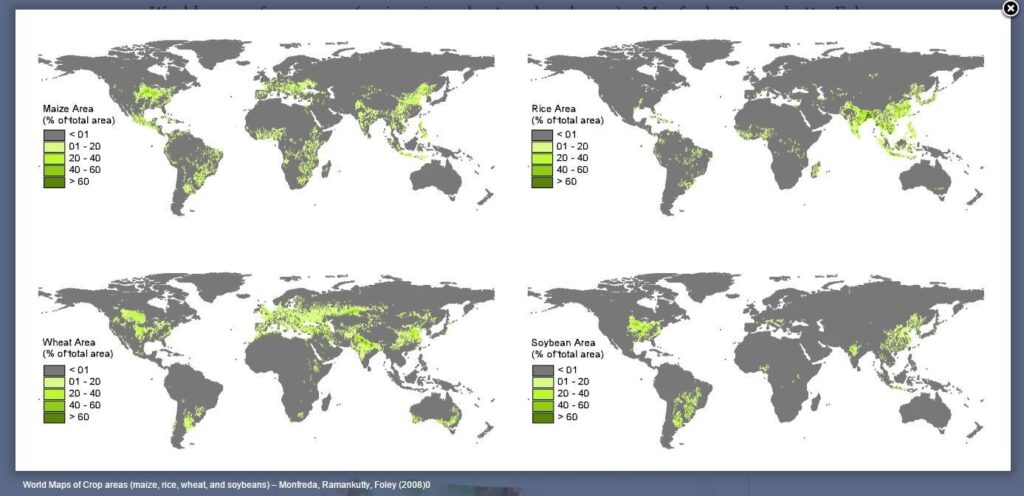
Rely on Indigenous + Local Knowledge
FAO writes that we are relying on the indigenous and local communities around the world to keep the knowledge of edible plants alive, as they are the major conservationists of agro-biodiversity. But more, we should be collaborating with them to collect seeds, help preserve or grow the local plants, learn to cook with these plants, and pass on the knowledge to our children.
We need to move away from marketed bland plants with questionable nutrition (but they can travel well), to local foods that can nourish us without destroying our planet. A good example of how this can occur so easily is to look at the iceberg lettuce in the USA.

- Common lettuce, Lactuca sativa, has its origins in the Middle East. Egyptian wall murals of Min, the god of fertility, depict lettuce in cultivation in about 2700 B.C. (1).
- In 1903, we had almost 500 varieties of lettuce.
- By 1983, we had just 36.
- At some point in the 1940’s-1960’s, “lettuce” in the USA always referred to the ”iceberg” plant that we now use mainly for making the Wedge Salad.
- Introduced in late 1940s, this lettuce was popular in the USA mainly because knowledge of other choices was not well known, as stores often only carried this version of lettuce.
- But the Smithsonian writes that it was popular because it was marketed, and behind the scenes, it was the only variety specifically bred to survive cross-country travel.
- And, they continue, that its name came from the ice packed train cars that carried the lettuce heads to various markets (before refrigerated train cars).
- In fact, did you know there are actual varieties of iceberg lettuce?
I foresee a future where we all need to have an entry-level farmers knowledge about food so that we can drive policies, and make healthy decisions for ourselves and families. So long as we are divorced from crop knowledge, the more our food is driven not by our nutritional and environmental needs, but by marketers, lobbyists, and scientists working for big agriculture.
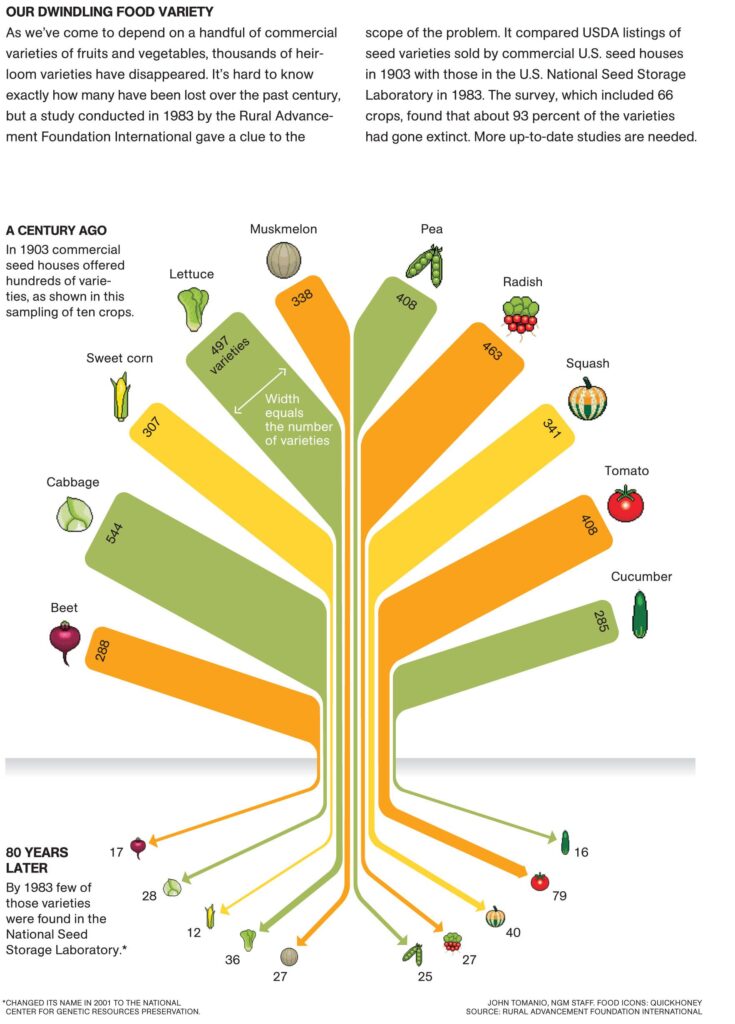
Seed Diversity
Dropping Seed Diversity
There is no disagreement plant and seed diversity has been, and continues to decline worldwide.
ModernFarmer (2018) writes, that the decline of seed diversity is a result of the relentless effort to industrialize agriculture. While this approach has in many cases improved yields, it has not been without consequences. … These seed activists believe the genetic diversity of crops to be one of humanity’s greatest assets.
- When you compare today to 1983 you’ll find that 93 percent of seed varieties from the early 20th century have disappeared (1).
- Today, 75 percent of the world’s food is generated from only 12 plants and five animal species (2).
- State of the World’s Plant Genetic Resources for Food and Agriculture, predicts that: as much as 22 percent of the wild relatives of important food crops of peanut, potato and beans will disappear by 2055 because of a changing climate (3).
- Scores of seeds no longer in widespread cultivation are maintained by agricultural institutes as resources for future crop research and development (4, 2022) because they are no longer in the wild.
Non-regenerative, industrial agriculture controls pests and disease through synthetic chemicals that often kill everything, including the good guys. (Don’t get misled here though, organic farming can use certain pesticides as well so are not pesticide-free.) The old-fashioned farming techniques, and regenerative processes, focus more on the crops and their diversification, which provides a more natural resistance.
Seed Diversity Provides Culinary Delights
Seed diversity expands our culinary, agricultural, and scientific knowledge.
The cornucopia of flavor found throughout the world’s culinary heritage of plant and animal varieties is lost if we do not preserve those seeds from plants and genetic material from animals, and knowledge about the environment they need to live in. If we lose those culinary plants, we lose a part of human culture, we lose that specific flavor, that special aroma, that amazing color, that mouthwatering taste from our food. We might also lose medicines, and other knowledge.
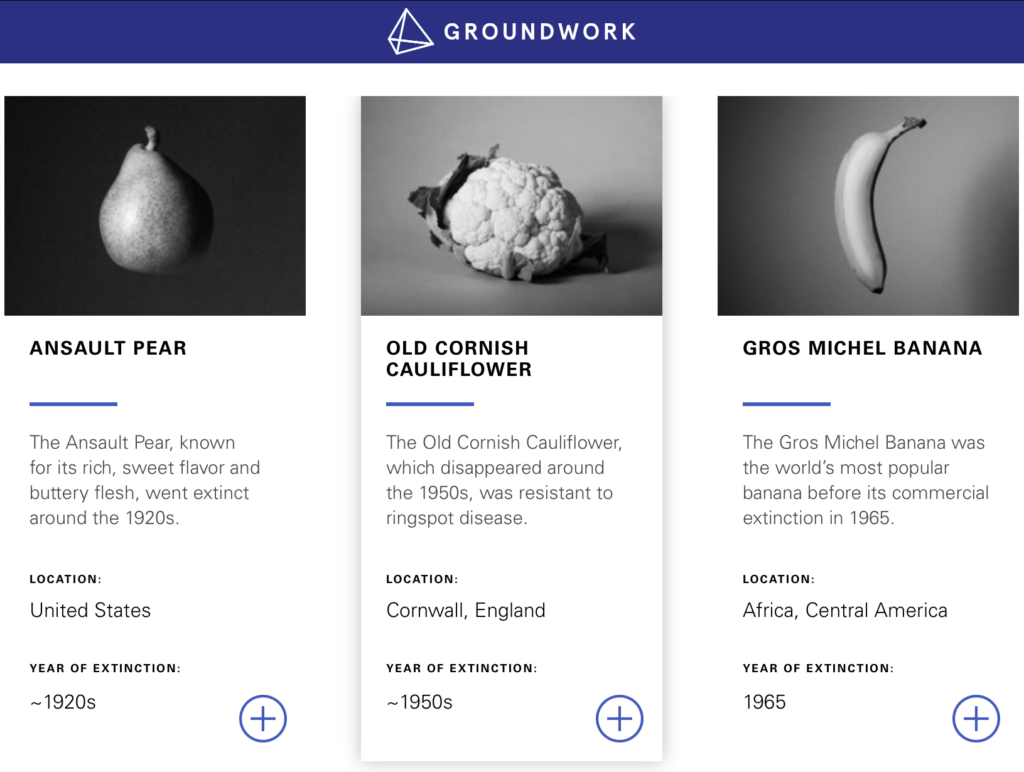
Free Market For Open Pollinated Seeds
Corporate ownership of seeds reduces seed and crop diversity, forces farmers to plant only particular crops and varieties, and lessens food availability.
For years now big agricultural corporations have genetically created crops that they own and sell to farmers with the provision that they are not allowed to harvest seeds. Instead they have to buy the seed each year, which increases additional costs to the farmer and profits to the corporation. This is a closed loop agricultural situation as the plants are created to withstand a type of pesticide, which of course the corporation also sells.
Open pollinated seeds that are locally adapted to microclimates, and shared among gardeners are not part of that corporate control and represents a true free market that supports farmers and backyard gardeners. Farmers are able to save, develop, share and sell these open pollinated seeds through local markets and informal garden groups. Farmers can also achieve a reasonable income from breeding and selling seeds, as right now there has been a constant run on plants and seeds due to the pandemic gardening we are all doing.
Supports Changing Habitats
Seed diversity allows us to identify plants that can feed us and survive a variety of environments which we might need on earth as climate changes, in a space station, or on Mars.
The great diversity of plant species, and varieties, have developed because every part of this planet has its own soil conditions, microclimates, and other agricultural conditions. So those edible foods play a part in the cultural and biological survival of that area’s woodlands, waterways, other plants, and animals. Without the diversity we have only one version of a seedless, cloned banana subject to climate and pest destruction; so when it is gone, the banana becomes a memory.
Provides Adaptability + Resilience
Genetic diversity in our seeds and plants holds the key to adaptability and resilience in our ability to grow food and feed ourselves.
If we only eat one type of wheat, and the farmer only plants that wheat, what do we do it that wheat is eaten by a wheat-critter we had not anticipated? The more diverse the available plants and their genetics, the less likely ”all is lost” when a loss does occur. In other words, genetic diversity in our food plants help us adapt to changing conditions. Farming a single plant variety is an extremely vulnerable position, that can cause disaster due to a plant’s susceptibility to disease, critters, climate, or even market demands.
Due to climate change, the weather patterns farmers have come to rely on are gone. Pests and diseases are showing up in places where they were once unknown. Droughts are occurring in many places considered our major farming areas. As a result, growing conditions are changing, and unpredictable. With only limited crops to pull from, a loss of diversity means we may lose a whole species of food that cannot adapt to these changes.
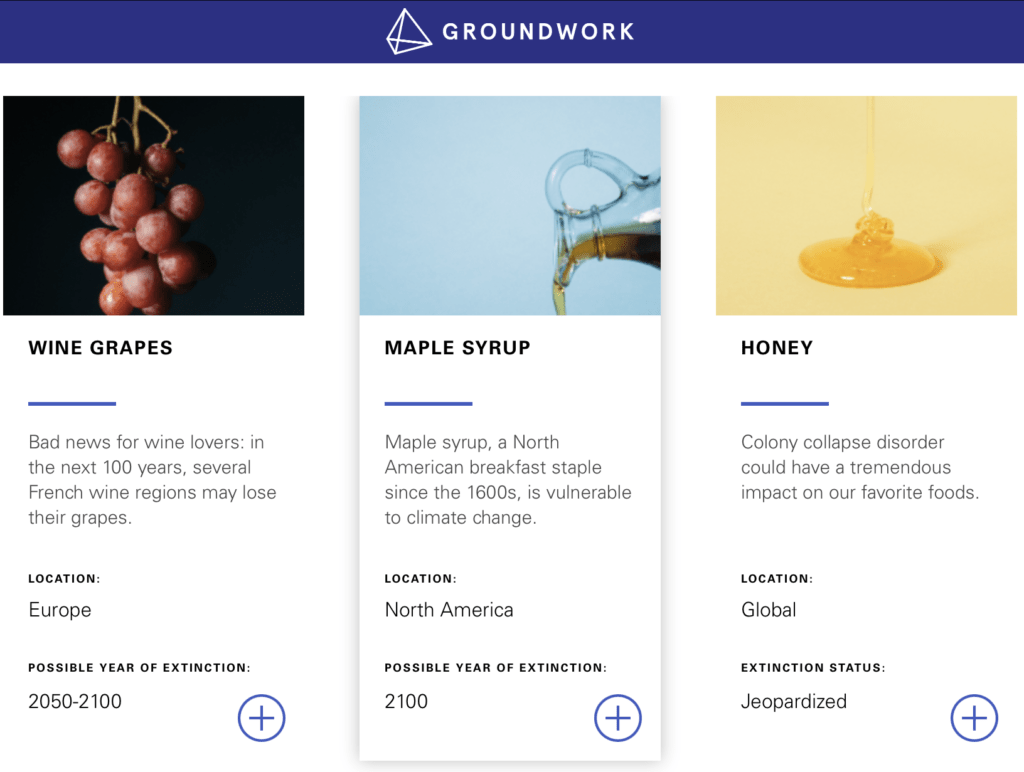
Harvests Food All Year Long
Food needs to grow and be harvested throughout the year, which is why diversity of crops, and the seeds they grow from, are so necessary.
We do not just eat one month out of the year, we need to eat every day. Thus the plants we rely on for food need to become edible at different times of the year. The plants we rely on need to grow and be harvested in various seasons. Thus diversity is what this situation calls for, and is why we have had the plants we do.
For example, I have two blueberry plants, at the end of the fruit cycle for one, the other is starting. Thus I have those berries for several months a year.
Sometimes the Loss is Priceless + Intangible
Seeds, plants, food are part of our makeup; they are part of our cultural heritage; they nourish our bodies and souls. They are not simply a commodity to be consumed, they are to be cherished.
Big, industrial agriculture has scientists that bred plants through direct genetic manipulation. Their goal is to breed traits that result in profits either directly (make the food bigger) or indirectly (resistant to xyz pesticide, which we make too).
But through the stories of old timey farming, the cultural importance of food cannot be understated. As FruitStand writes, contrast that story about the industrial scientists to: the centuries-long stories of heirloom seeds, which are intertwined with the lives of those who cultivated them. The women who hid seeds of ancient African rice varieties in their hair as they were forced aboard slave ships, for example; or the tribes in New Mexico who recently revived ‘Po’suwaegah‘ blue corn, a variety their ancestors made into a nutritious creamy beverage. The diverse foods of the planet, and the seeds they come from, are a priceless piece of our humanity.
Diversity is Losing
Example: Coffee
There are 120+ species of Coffea, but CNN (2019) reports that researchers fear that up to 60% of wild coffee plants could go extinct due to climate change and more specifically: human encroachment, deforestation, droughts, and plant diseases. Studies show that coffee plants require a forest habitat in which to grow, and as deforestation and human encroachment is happening in most areas of the world, the areas they naturally grow in shrinks. This means future coffee will be more expensive, and probably not taste as good.
Meanwhile, we have been agriculturally focused on only two species, that are now key to what we drink each morning. One, Coffea Canephora, is not as good tasting but high in caffeine, and the other, sweet tasting Coffea Arabica; and both are being affected by climate change and a fungal disease. But, there is another plant, Coffea stenophylla (Sierra Leone) considered by many to be extinct, until recently. Luckily in 2019-2020 a plant was found and is currently being cultivated to see if it can withstand our changing climate. It has very small berries, and a low yield per tree which could impact coffee production in the future.
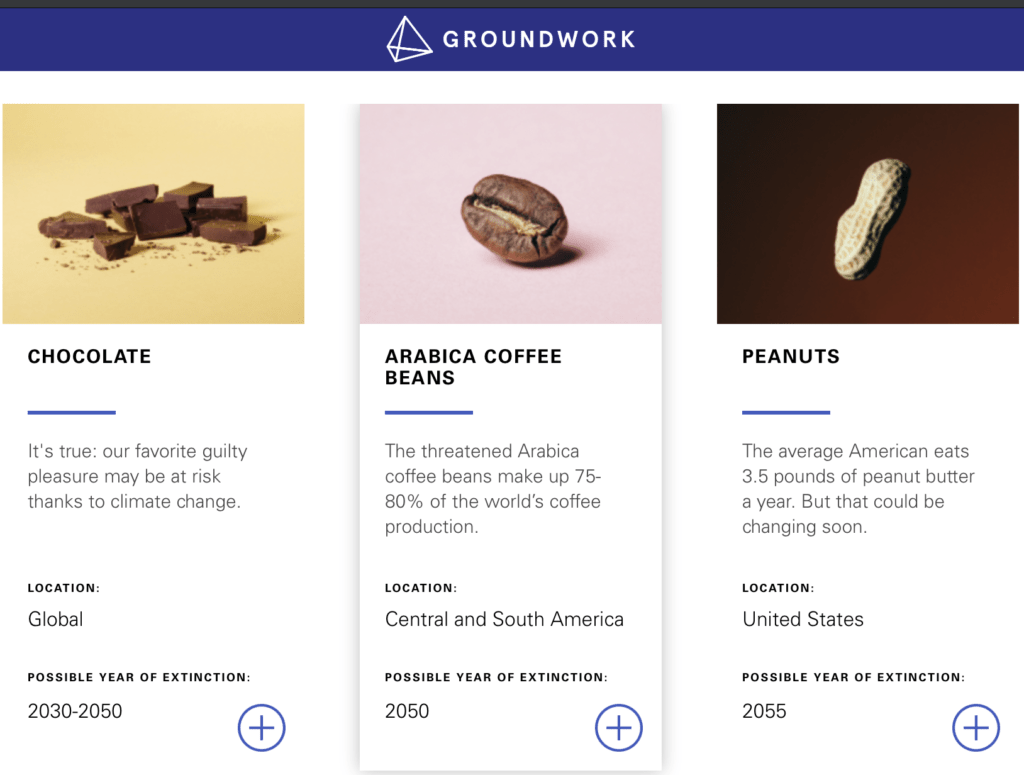
Diversity Can Be Lost
Here are the facts:
- 86% of the apple varieties once grown in the USA have disappeared.
- 90% of milk, yogurt, and ice cream available in the USA comes from one dairy cow breed.
- A severe blight in the early 1900s infected and killed almost all of the American chestnut trees.
- Loss of bees jeopardizes the continuation of plants they pollinate (like apples, cranberries, broccoli, almonds, blueberries, cherries, and countless numbers of others).
So support heirloom and open market seeds that are not sold by a large industrial corporation. Buy locally grown heirloom varieties of food and plants. Support restaurants trying to make a difference. Garden your self and save seeds. I have got to believe we are not so stupid as to destroy our futures for short term profits, although in my heart I am not so sure.
—Patty
—**—